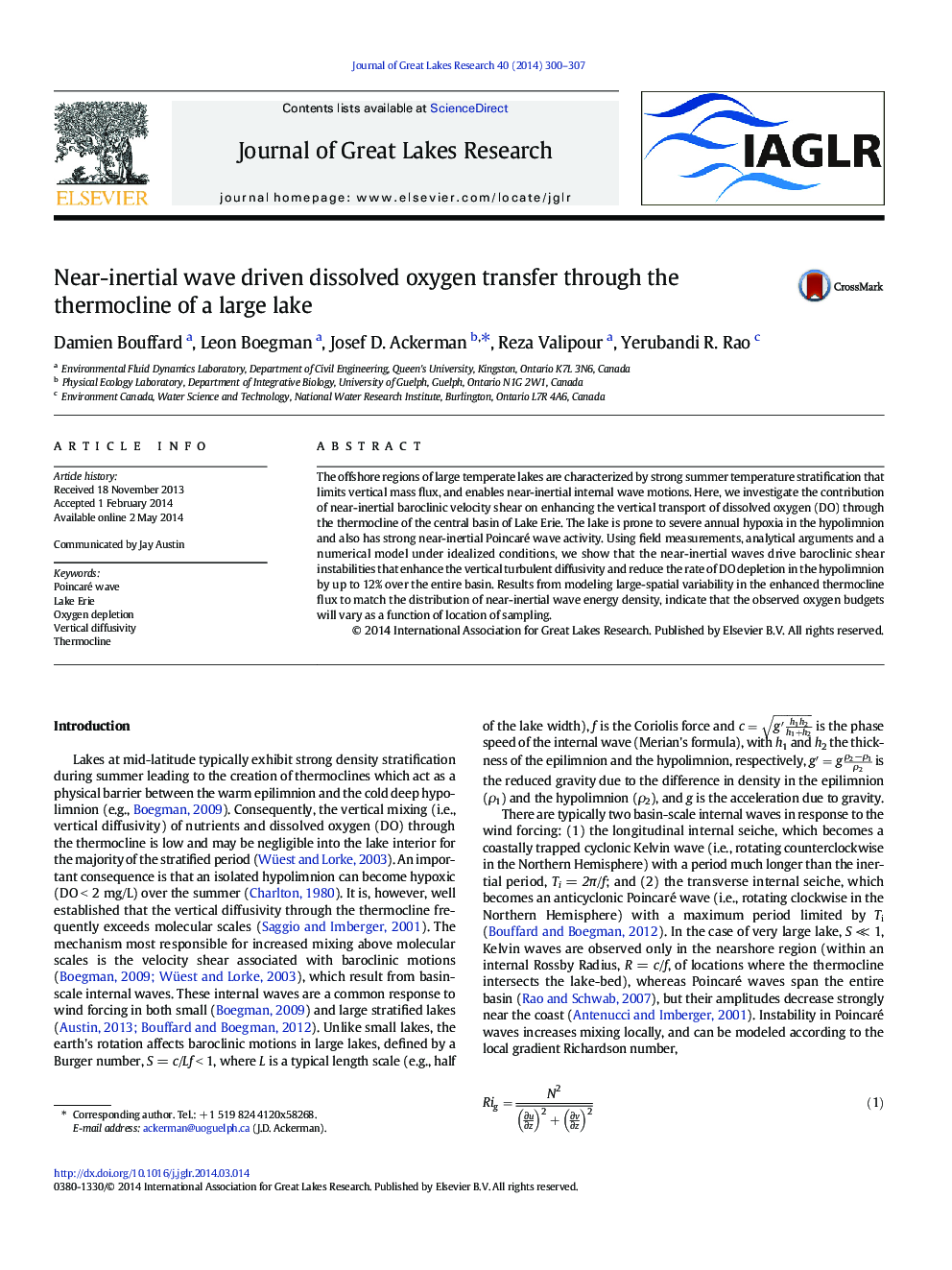| Article ID | Journal | Published Year | Pages | File Type |
|---|---|---|---|---|
| 6305213 | Journal of Great Lakes Research | 2014 | 8 Pages |
Abstract
The offshore regions of large temperate lakes are characterized by strong summer temperature stratification that limits vertical mass flux, and enables near-inertial internal wave motions. Here, we investigate the contribution of near-inertial baroclinic velocity shear on enhancing the vertical transport of dissolved oxygen (DO) through the thermocline of the central basin of Lake Erie. The lake is prone to severe annual hypoxia in the hypolimnion and also has strong near-inertial Poincaré wave activity. Using field measurements, analytical arguments and a numerical model under idealized conditions, we show that the near-inertial waves drive baroclinic shear instabilities that enhance the vertical turbulent diffusivity and reduce the rate of DO depletion in the hypolimnion by up to 12% over the entire basin. Results from modeling large-spatial variability in the enhanced thermocline flux to match the distribution of near-inertial wave energy density, indicate that the observed oxygen budgets will vary as a function of location of sampling.
Related Topics
Physical Sciences and Engineering
Earth and Planetary Sciences
Earth and Planetary Sciences (General)
Authors
Damien Bouffard, Leon Boegman, Josef D. Ackerman, Reza Valipour, Yerubandi R. Rao,
